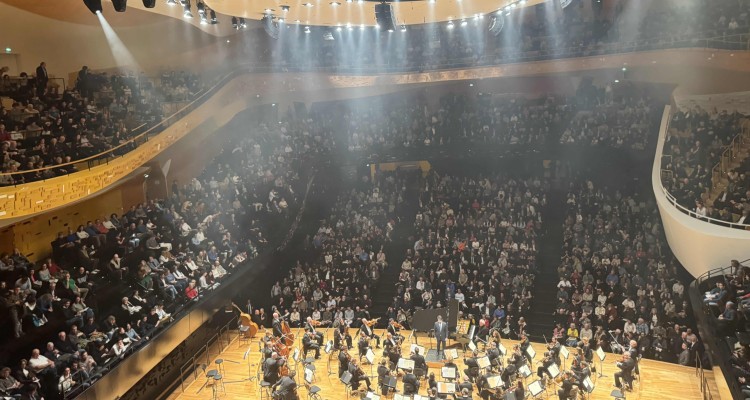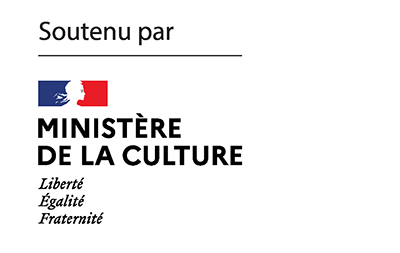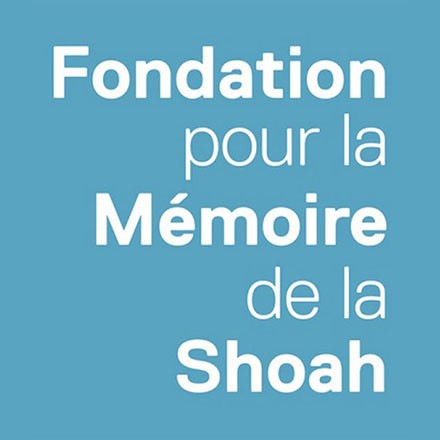Last May, Gallimard published Guerre, the first of Céline’s unpublished manuscripts, missing since the end of the war and now available again after a rocky history that is still largely undisclosed. Media triumph and financial success were the order of the day. The writer’s anti-Semitism? A few radio and television programmes mentioned it, of course, but as a regrettable episode and an almost irrelevant detail, at the margin of the author’s genius. The media ecstasy was not thwarted, and it is hard to see what would hinder the Gallimard publishing house in its desire to republish his pamphlets. A specialist of Louis-Ferdinand Céline, Philippe Roussin comes back to K. on the project of editing Céline’s lost manuscripts, a problematic work but whose goal is elsewhere. For in the end, it is always Céline’s status as a literary legend that is at stake, at the cost of an enterprise of erasure and rewriting aimed at reintegrating the author into the national pantheon and turning him into a cash machine.

Readers, publishers and copyrights holders all have the dream of seeing their favourite writers continue to write after their death. That desire is, here, almost a reality. Guerre is the first publication to be drawn from Céline’s manuscripts, which disappeared in the summer of 1944 and were rescued by the children of resistance fighters and Jean-Pierre Thibaudat, a former drama critic for Libération, and reappeared with their clothes pegs in 2020, sixty years after the author’s death. This is the most interesting text of the recovered manuscripts, according to Henri Godard, Céline’s historical editor. The book was top of the sales charts on Amazon before it was even released. The discounts granted to the rightful owners, who have played the competition, are very substantial. Other volumes will soon follow, London, King Krogold’s Will, part of Pipe Breaker. It is not known what will happen to the anti-Semitic file that was part of the manuscript set.
Awaiting a critical edition
What to do with Guerre? Judging by Céline’s demands concerning the preparation of his texts, he would probably not have accepted the edition that is delivered to us, well annotated by Pascal Fouché. These pages would have deserved a critical edition like the one in the Pléiade volumes, especially as they pose dating problems, which themselves refer to the definition of their status. The blame does not lie with the editor, who was hardly given time to work on it, barely six months, but with the haste with which the copyright holders wished to see this text published. Extra-literary considerations led to the compromise of a critical edition of an unpublished work by an important author. It was unknown until 2020. Nothing is known about the intentions of the author, who abandoned these manuscripts to write Mort à crédit (1936), before moving on to write anti-Semitic pamphlets (1937, 1938, 1941), then Guignol’s band (1944), without ever returning to them. We do not know how this set, dated 1934 by the publisher, fitted into the writer’s present. There is talk of first draft writing. But what does the expression mean when it comes to Céline? No doubt the copyright holders should have highlighted the work of Jean-Pierre Thibaudat, who has had the longest contact with these manuscripts and knows them best. Why was the editorial work not carried out on the basis of these transcriptions already made, even though the publication deadlines were very short? Perhaps it would have been better to proceed at a minimum and assume that the text is not finished. Perhaps the book should have been entitled War Diaries. For Guerre is not a title, but an indication, from the author[1], and to title this set of leaflets in this way comes down to declaring as continuous and finished a text that is actually not. The manuscript begins on page 10, but its first words ‘Not quite’ – which could have been a possible title… – are dropped from the transcription; the published text thus begins in medias res, without this missing beginning being indicated. The photographs of some of the folios at the end of the volume and their exhibition in the Gallimard gallery attest to this: these folios show a number of mending and additions and, sometimes, large blanks. Why have these blanks been reduced to lines of dots in two places in the edited text (p. 113 and p. 114)?
The question of dating is one that a critical edition should raise. Henri Godard leans towards 1933, the date conjectured by the editor is 1934[2]. If we are talking about 1934, the year is anything but trivial: it is the twentieth anniversary of the declaration of war in 1914, ‘celebrated’ with fanfare in France, and to which newspapers and magazines devoted special issues. 1934 was also the time of the assessment, judged to be disastrous, of the twenty years that had passed, and the first signs of a new dark future, after Hitler’s accession to power in 1933. Following the crisis of 6 February 1934, a cabinet of national unity was formed; Pétain was Minister of War: he launched a new policy of defence and “reawakening the military spirit”. In the November 1934 special issue of Europe, the first of Giono’s pacifist manifestos, “Je ne peux pas oublier”, appeared, and elsewhere in the issue it was stated that “we no longer have any reason today to doubt the imminent arrival of war […] war is already in our midst […] most of us admit the foreshadowing of it”[3]. What is the relationship of the writing and the War sheets to this heavy political-historical context?
Scenes of War
What is Guerre about? The manuscript is made up of six ” sequences “, to use the expression of the editor, Pascal Fouché. The first, 38 pages long, is by far the most impressive. It opens with an ” I ” who regains consciousness and speaks, wounded in the arm and surviving in a state of shock, surrounded by dead comrades: ” I must have stayed there for part of the following night. The whole ear on the left was stuck to the ground with blood, the mouth too. Between the two, there was a huge noise. A man struggles to put his exploded body back together, the flow of speech flows as if from an open skull. The writing is hallucinatory, made of short sentences. The narrator raises the question of the reliability of memory (“Beware. It’s fucking the past”) but, twenty years after the shock, everything is there, reconstructed: the narrative is hypermnesic, even though the text, which is very dense, is oversaturated with events. Ferdinand’s first name appears only fifteen pages later. Céline returns once again to the primitive stage of writing, the trauma of 1914, which he knows has been recounted many times, hence this moment of reflexivity in which the writer he became in 1932 observes the one who is writing, over his shoulder: “I learned to make music, sleep, forgiveness, and, as you see, beautiful literature as well, with little pieces of horror torn from the noise that will never end. As Mohamed Mbougar Sarr, the author of La plus secrète mémoire des hommes and a great reader, points out, it is hard to “believe that this is a first draft”. These pages are ‘very beautiful’, ‘even if the text says nothing new compared to that of Voyage au bout de la nuit’; the ‘sounds dominate'[4].
The moment that is the focus of Céline’s narrative takes place at the beginning of the conflict, during the most deadly war of the movement. Among the writers who died then, Péguy, on 5 September 1914, at the age of 41; Alain Fournier, author of Le Grand Meaulnes, on 23 September 1914, at the age of 28. Céline was wounded in the right arm on October 25th 1914, during the battle of Flanders, the German offensive on the ports of Northern France which stopped on November 17th in front of the resistance of the English, French and Belgian troops. The front stabilised.
Rereading Huysmans ?
The next five sequences, of a more classical style and with a lot of dialogue, with scenes that turn into disasters as Céline knows how to write, take place in hospitals at the back of the front. The gore or salacious dimension of these sequences has been emphasized until now. A critical edition, like the one of Proust’s Seventy-Five Leaves published by Gallimard a few months ago, should establish – this is my second example – the similarities that these pages have – so numerous that they seem to be a rewriting – with Sac au dos, Huysmans’s contribution to the naturalist manifesto of Les Soirées de Médan (1880)[5].
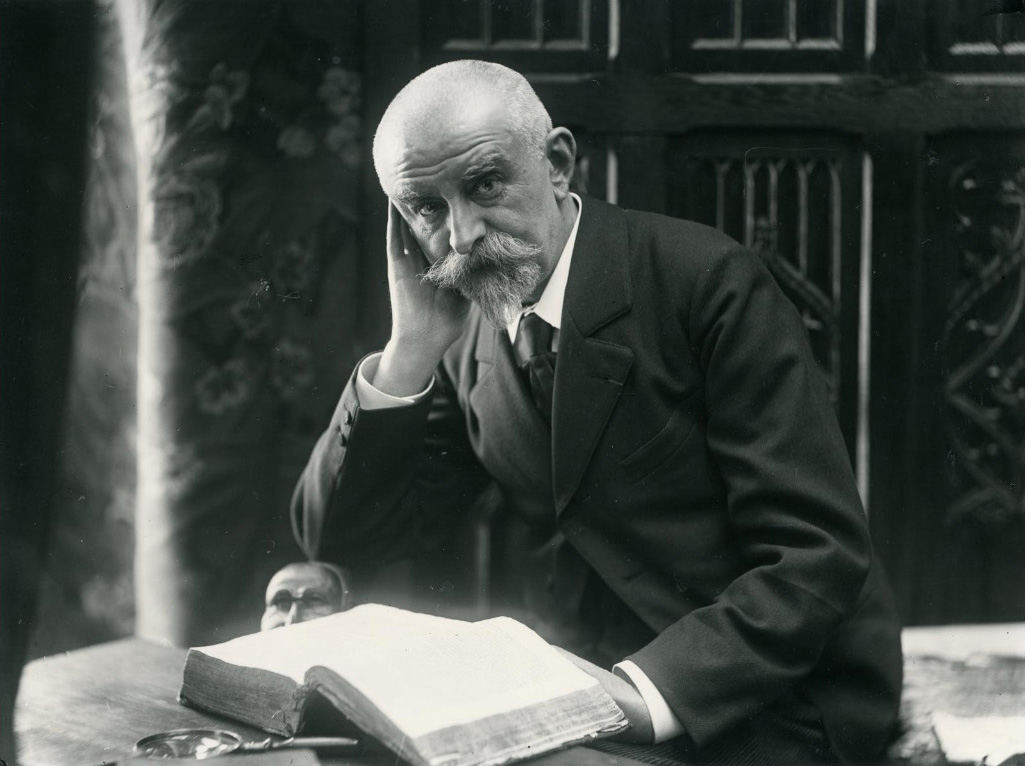
Huysmans’ short story evokes the Franco-Prussian war of 1870, in a realistic style, in contrast to the dominant patriotic aesthetic. The author was 22 years old and only briefly participated in the campaign. The war is seen from cattle cars and stinking hospital wards. In Guerre, we find the same personnel and the same setting as in Sac au dos: “Cour des Miracles”, doctors, wounded, cripples jumping up and down, sick people who are “out of age” (Huysmans), prostitutes denouncing to the military authorities the soldiers who are their clients. The same character of a nurse delivering permission to leave the hospital: “so frail, so pretty […] the beautiful big eyes! the long blond lashes! the pretty teeth!” (Huysmans, again). The one from 1870 is still a hospital sister; the one from Guerre, a nymphomaniac, jerks off the wounded and dying and is a necrophiliac. The nurse in Sac au dos is called Angèle, the name given in Guerre to the prostitute who has come to the front to work at the request of her pimp, and who will denounce him. While Huysmans’ character finally returns home to Paris, Céline’s character leaves the war by going abroad: “It was over with this filth, it had [spread] all its manure over the landscape of France, buried its millions of purulent murderers; its groves, its carrion”. Peace can only be found abroad, outside the French language. French must remain the language reserved for execration (Jean-Marie Le Clézio’s words at the time of Céline’s death in 1961), commensurate with the violence suffered in the war.
Language and politics of the underground
The third example, among others, on which a critical edition should shed light, concerns the position of the milieu and the crime underground in Guerre. The pimp, who made only a furtive appearance in Sac au dos, is at the centre of Céline’s text. The place given to the milieu and the underworld is the great revelation of Guerre. We knew, of course, Guignol’s band (1944) and the pages on the French prostitution scene in London which, during the conflict, wanted to avoid the massacre and reap the “war profits”: “I see only one thing in war!… It makes thrushes and money! All you have to do is lie down and take it!… It’s the ladies’ work” (Guignol’s band, 1944). But this is not just a “picturesque” depiction of the prostitution scene.
In Céline’s case, as in Huysmans’, it is a question of “fleeing as quickly as possible from this lamentable prison” (Huysmans). At a time when the war is destroying all patriotic teachings and the morals passed on by parents, and when Ferdinand understands that this war is a war of all against all (the wounded are always suspected of being deserters or of faking it, and then the firing squad is there for them), the outlaw ethics of the world of kings are offered as an alternative morality and a survival kit. With the character of Bébert, also known as Cascade, the name of the London pimp in Guignol’s band, the underworld proves to be the great school of life. If Céline did not rewrite Wilhelm Meister’s Years of Apprenticeship, Guerre is nevertheless, in its own way, a (rough) training novel: “One is a virgin to horror as one is to voluptuousness” (Journey to the End of the Night). “We set out in life with the advice of our parents. They did not stand up to existence” (Guignol’s band, 1944).
Through contact with Cascade, a pimp, Ferdinand leaves the world of the peasants, the deadbeats, the cellars and the little guys, whom the underground “despises, devalues and tramples on” (Cendrars, Panorama de la pègre, 1935). He frees himself: “I didn’t give in to the surprise that would have wanted me to remain as stupid as before, eating misfortune […] because that was all I knew since my upbringing […] As I said […] Ferdinand […] leave the idiots in the shithouse […] don’t believe in anything any more”; “I owe nothing to humanity”. The law of the middle thus governs relations with the other sex: “mind your own business,” I replied, “like Cascade. It was a funny way of talking, but it was still successful”.
The world of the underworld undoubtedly sheds new light on the question of Céline’s popular and slang language: it is indeed the frequentization of the jargon of the milieu that makes slang the language of hatred of which he spoke. For the war, of course, is also in the language. The language of the freedmen cuts the links with the language of their parents, with the language of the rear, that of Barrès, the singer of the exaltation of combat, whom Céline, for this reason, hates in Voyage au bout de la nuit.
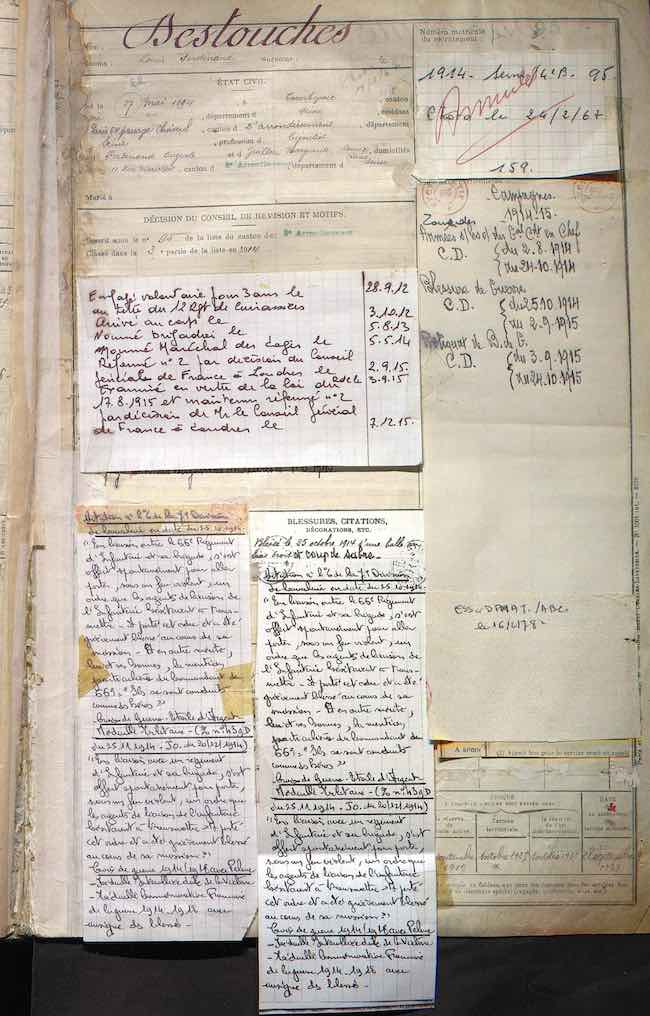
The crime underground, finally, is that social milieu where everything is exchanged, where there is neither honour nor solidarity. Instead, we find denunciation, present in Guerre at two key moments in the text. It is a matter of life and death. Angèle denounces Cascade, who will be shot; freed from her pimp and free, she can move on to another man. Ferdinand threatens to denounce the sexually abusive nurse if she does not sign the permission to leave the hospital, which will allow him to go to England with Angèle.
Cascade’s freedom of thought and fearlessness inevitably brings to mind Aleksandr Solzhenitsyn’s and Varlam Shalamov’s analyses of the place of criminals and common criminals in the Gulag. In “About a mistake made by literature”, Shalamov writes: “Fictional literature has always represented the world of criminals with sympathy and sometimes complacency. It has adorned the underground with a romantic halo, allowing itself to be seduced by its tawdry glitter. Artists have failed to discern the true and repulsive face of this world. This is a pedagogical sin, an error for which our youth is paying dearly […] Hugo believed that the world of crime was a layer of society that protested vigorously, resolutely and openly against the hypocrisy of the reigning order. But Hugo did not bother to examine from what point of view this community of thieves was fighting against whatever power was in place.”[6].
On the links between the underworld and politics, how can we not think of The Resistible Rise of Arturo Ui (1941), Brecht’s play in which Hitler, Goebbels, etc. have the expressions and features of Chicago gangsters. How can we not also think of Hannah Arendt’s reflections on the role played by the underworld in the rise of Nazism: “the elite was happy whenever the mob succeeded, through terror, in getting itself admitted on an equal footing by respectable society […] The provisional alliance between the elite and the rabble rested largely on the real pleasure with which the former watched the latter destroy respectability […] What seduced the elite was extremism as such”[7]. The importance of the underworld in Guerre allows us to better understand the underworld anti-Semitism that is Céline’s in the pamphlets, and his links with the shadowy officines, from 1937 onwards.
The school of dilapidation
Guerre confirms what we already knew: Céline is not the author of Guerre et paix. For there is no peace after war, a definitive experience from which there is no escape. Some of Hannah Arendt’s reflections on Brecht are worth recalling here, because they apply to Céline: he “was drafted as an ambulance driver in the last year of the war : the world appeared to him at first as the scene of an absurd slaughter, and speech in the guise of grotesque declamations’; he was one of ‘the men of that generation, who had been initiated into the world in the trenches and on the battlefields of the First World War [… ] they began to produce a curious kind of literature, above all novels in which nothing seemed worthy of interest to them but degradation on the psychological level, suffering on the social level, personal frustration and general disenchantment”[8]. Hannah Arendt, in the same text, distinguishes Brecht from the ‘school of dilapidation morbidly fascinated by death, which in its generation was perhaps best represented in Germany by Gottfried Benn and in France by Louis-Ferdinand Céline’.

History begins and ends with the war, from Journey to the End of the Night (1932) to Rigodon (posthumous, 1969). The last pages of the work tell of the exit from the ruined Reich in a train carrying Mongolian children to Denmark in March 1945. In retrospect, the war extends its shadow to childhood: in Death on the Installment Plan, it takes the form of domestic violence or a child being beaten. War without peace, because peace is missing: “I caught the war in my head. It is locked in my head” (Guerre). That of peace – for never in the story does the word appear in Céline’s writing – hovers over the end of the text, when Ferdinand is about to leave French territory: “I should be able to go abroad to a country where people don’t kill each other”; “There wasn’t a war in London”.
Exceptional anti-Semitism
In Mort à crédit (1936), the father’s anti-Semitic ruminations are part of the ferocious clinical picture drawn up by the narrator: “My father, he talked to himself, he went off in monologues. He would rant and rave, he wouldn’t stop… The whole caboodle of evil… Destiny… The Jews…” (p. 688); “He would hand it over to the ‘Freemasons’… Against Dreyfus” (p. 600)[9].
A year later, in 1937, Céline published Bagatelles pour un massacre. Several hypotheses can be risked. Céline’s anti-Semitism had already been expressed in L’Eglise, a play denouncing the S.D.N., written in 1927 but published in 1933. This anti-Semitism was that of that part of the medical profession, courted by the Action Française, which was mobilised against the “plethora” and the presence of Jewish doctors from Poland or Romania. The arrival of the Popular Front in power, following the elections of May 1936, which made Léon Blum the Prime Minister of the government, was also a factor. The detestation of the republican and sovereign people, presented as a moronic barrio people, explodes in Bagatelles pour un massacre: “there is no ‘people’ in the touching sense in which you understand it, there are only exploiters and exploited, and each exploited person only asks to become an exploiter. He doesn’t understand anything else,” Céline wrote to a correspondent in July 1935[10]. Céline’s people are neither Louis Guilloux’s nor Camus’s: Guilloux and Camus do not dishonour the people from whom they come.
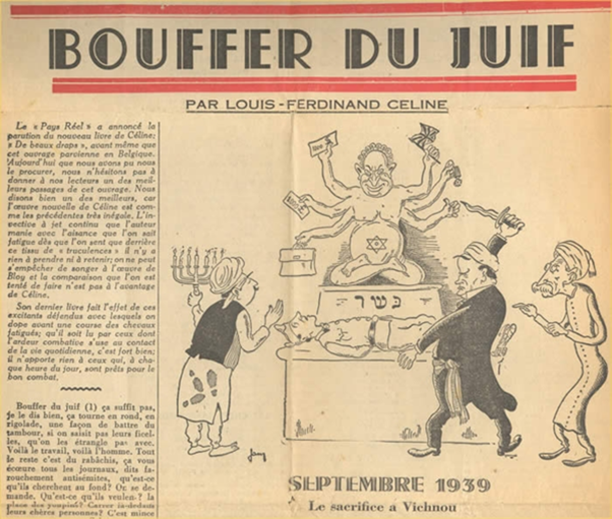
After Mort à crédit, we must also take into account what has been called a breakdown of fiction. Céline said it several times at the end of his life: “An author doesn’t have that many books in him. Le Voyage au bout de la nuit, Mort à Crédit, that would have been enough […] basically I had said all I had to say […] I didn’t have much left to say”[11]. Bagatelles pour un massacre allowed him to gain the recognition that literary circles had denied him in 1936: Mort à crédit was too obscene in their eyes. His anti-Semitism was not encumbered by the limitations of the anti-Semitism of integral nationalism. He did not distinguish between national and foreign Jews. And one wonders what his contribution was to the second statute of the Jews of June 1941: in Les beaux draps (February 1941), he was more of a collaborator than Vichy, more radical than Xavier Vallat and wanted a statute that was as restrictive as possible.
Arendt was still living in Paris when Bagatelles pour un massacre (1937) and L’École des cadavres (1938) were published. In an article published in mid-1942, she wrote: “France had produced an exceptional anti-Semite […] the fact that this man was a novelist of value is characteristic of the particular situation in France, where anti-Semitism had not been socially and intellectually discredited as in other European countries. Louis-Ferdinand Céline’s thesis was simple, ingenious, and had just the right amount of ideological imagination to complement the more rationalistic antisemitism of the French. According to Céline, the Jews had prevented the political unity of Europe, provoked all the European wars since 843, and plotted the ruin of France and Germany by arousing their mutual hostility.”[12]. Curiously, we find an echo of this thesis in the foreword to Guerre: the wounded of October 1914, we read, was ‘the witness of the second world war since Germany and France, these two Christian nations, did not wait more than twenty years to throw themselves against each other’ (p.18).
Business is business
If we are not, with Guerre, faced with a critical edition of a text, we are, nevertheless, confronted with a well-managed editorial operation. Of what nature? For the publisher, it is first of all a question of making up the deficit in the account left by Céline’s widow at his death in 2019 and of reimbursing himself for the substantial advances paid to the rightful claimants. For the latter, this is a major manoeuvre as well as a juicy financial deal.
Since his trial and conviction in 1950 (one year in prison and the general confiscation of half of all his property), Céline has never again escaped his lawyers. Far-right lawyers, such as Jean-Louis Tixier-Vignancour, who had obtained his amnesty in 1951, whom Jean-Marie Le Pen, his manager during the 1965 presidential campaign, found “too anti-Semitic” and of whom de Gaulle said: “Tixier is Vichy, the proud collaboration, the militia and the OAS”. François Gibault, a “right-wing anarchist”, whose career began in Tixier-Vignancour’s law firm, which remains his “model”, is today one of the two heirs of the writer, after having been the counsel of his widow, until her death in 2019. Céline manipulated his lawyers between 1946 and 1951, but it was them who decided the editorial destiny of his work and his public image. He is perhaps the only writer whose estate is not managed by his family, nor by a publisher, nor by a foundation, nor by a literary agent, but by his defence. Hence the feeling of a work under guardianship and the considerable bias in its editing and interpretation. The result is a biography in defence of the author, manuscripts that sell for a high price on the autograph market, that no one sees who is not authorised to see them, the forks imposed on the publisher, the idea, in 2018, of republishing the anti-Semitic pamphlets against the author’s will: in all, an enterprise of erasure, de-historicisation and rewriting aimed at reintegrating Céline into the national pantheon and turning him into a cash machine.
For in the end, it’s always about Céline’s status as a national writer. The long march of rehabilitation had begun in 1957, with the publication of D’un château l’autre, a chronicle of the life of the French exiles in Sigmaringen, in 1944-1945, around Pétain and Laval. The 1960s of Gaullism and the Nobel Prizes for Literature awarded to Camus (1957), Sartre (1964) and Beckett (1969) were hardly favourable. It was following the retro wave of the 1970s that Céline’s work gradually came to occupy a central place in the French literary landscape. There are now more than ten biographies of the writer, some of his wife and one of his cat.
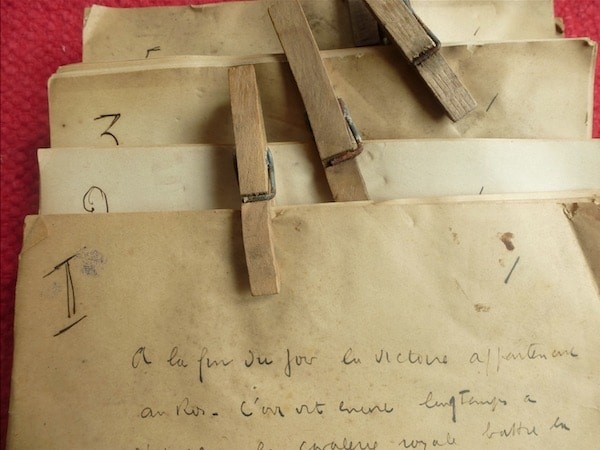
In 2011, the aborted commemoration of the fiftieth anniversary of Céline’s death, listed and then withdrawn from the Compendium of National Celebrations, had destabilised the status of the national writer. The aim now is to rectify the failed commemoration of 2011. Without being, far from it, the announced masterpiece, Guerre comes at the right time: the first world war erases the second, and whitewashes the Céline of 1937-1944. The publication already produces a reversal effect. In 2018, Gallimard wanted to publish the pamphlets in an annotated, even critical, edition, at the risk of tarnishing its reputation as a publisher by turning anti-Semitism into an “editorial market” (Michel Winock). Today, with the reappeared manuscripts, Céline becomes a writer again, the one of the years 1932-1936, before the descent into anti-Semitism (which seems to be only a purgatory since there is again a question of republishing the pamphlets).
The resurfacing, in 2020, of more than 5300 missing leaflets, preserved and transmitted intact by the children of the Resistance fighters, and Jean-Pierre Thibaudat their mediator, changes the situation. The “manuscript that disappeared in 1944” of Guerre, the publisher Pascal Fouché is careful to specify, is “well preserved”. The copyright holder insists on talking about “stolen” manuscripts in the foreword. The lawyer agrees with his client: “purified, isn’t that, above all, what it means to be stolen” (Interviews with Professor Y, 1955).
Can we expect that Céline’s manuscripts, once published, will join the scroll of The Hundred and Twenty Days of Sodom and the 75 Proustian leaflets of Proust in the patrimonial funds of public collections? This would make it possible to settle part of the dispute between Céline and the Republic. It is not certain that the copyright holders would want this. Milan Kundera would call it a betrayed will. They have indicated that they will deposit the manuscript of Mort à crédit, to settle the inheritance costs. Guerre now has a print run of 140,000 copies. The copyright holders will receive high royalties. The manuscript of Guerre will probably not enter the collections of the Bibliothèque nationale, but enthusiasts will be offered a reproduction by the Editions des Saints Pères, from 20 May. The volume is on sale for 160 euros and 1000 copies have been printed. Do the maths. During the rehabilitation work and while waiting for the critical editions, business continues. In celebrating the fourth centenary of Molière’s birth this year, we are also paying tribute to the father of Tartuffe.
Philippe Roussin
Philippe Roussin is director of research at the CNRS. He is the author of ‘Misère de la littérature, terreur de l’histoire : Céline et la littérature contemporaine’ (2005) and co-edited ‘Céline à l’épreuve. Réceptions, critiques, influences’ (2016).
Notes
| 1 | In a letter to Eugène Dabit, dated 14 July [1934]; in 2009, the editors of the correspondence in the Pléiade think that Guerre refers to Casse-Pipe, another, known text. |
| 2 | Henri Godard “In 1933 he was far from having found his style”: Guerre “is the longest, most readable and most interesting of the texts found. It was written in 1933, when Céline, without giving it a title, was experimenting with what to write after the Voyage“, Figaro littéraire, 28 April 2022. |
| 3 | Jean Blanzat, “Interrogation”, Europe, special issue 1914-1934, 15 November 1934, p. 337. |
| 4 | Conversation with Mohamed Mbougar Sarr, after the scientific meeting organised around and with him at the EHESS, Campus Condorcet, Aubervilliers, 11 May 2022 |
| 5 | This has not escaped the notice of Damien Zanone, Professor of Nineteenth-Century French Literature at the Université Paris-Est Créteil (UPEC). |
| 6 | Varlam Chalamov, Essays on the World of Crime, translated from the Russian by Sophie Benech, Arcades Gallimard, 1993, p.1. |
| 7 | Hannah Arendt, The Origins of Totalitarianism. Eichmann in Jerusalem, edition edited by Pierre Bouretz, Gallimard, Quarto, 2010, p. 646 and p. 651. |
| 8 | Hannah Arendt, “Bertolt Brecht”, Vies politiques, Tel, Gallimard, 1986. |
| 9 | The references are to the edition of the novels in the Bibliothèque de la Pléiade. |
| 10 | Letter to Elie Faure, 22 or 23 July 1935. |
| 11 | Cahiers Céline, 2, Céline et l’actualité littéraire 1957-1961, Gallimard, 1976, p.169, p.196, p.199. |
| 12 | Hannah Arendt, “From the Dreyfus Affair to France today,” Jewish Social Studies vol. IV, No. 3, July 1942, pp.195-240, The Origins of Totalitarianism. Eichmann in Jerusalem, op.cit. p. 277. |


